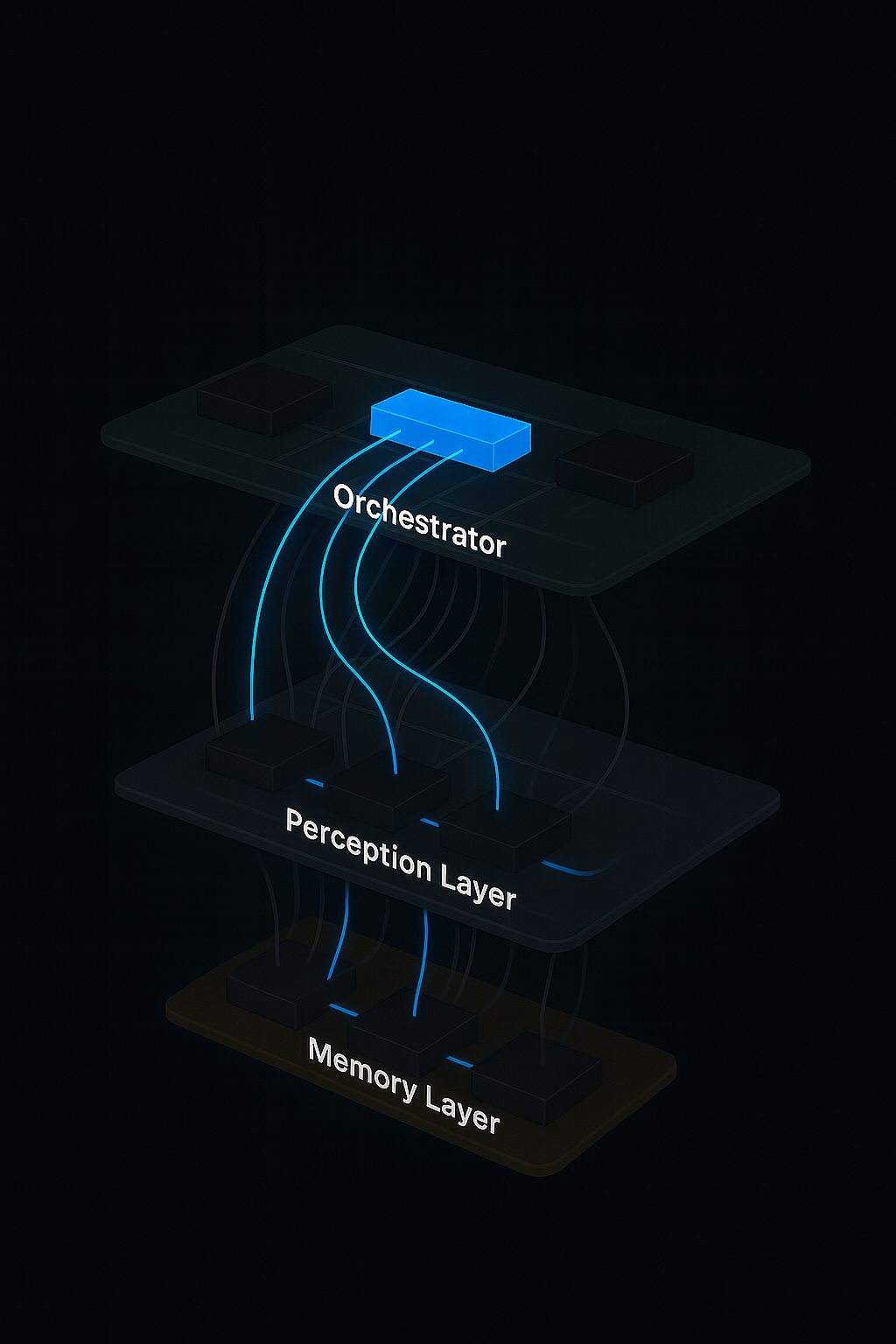Cognition — the live loop
A continuous control loop that senses, reasons, and acts with guardrails. Every iteration evaluates goals, constraints, uncertainty, and cost.
A continuous control loop that senses, reasons, and acts with guardrails. Every iteration evaluates goals, constraints, uncertainty, and cost.
Multi-pass reasoning blends structured planning and deterministic checks. Plans are validated against policy before execution.
RAG++ builds a retrieval plan: sources, filters, joins, ranking. Each citation carries provenance and freshness.
LLMs draft structured artifacts—plans, tables, JSON, code—validated by schemas. Invalid outputs are repaired automatically.
Actions are transactional: typed inputs, dry-runs, approvals when required. Every side effect is logged with policy context.
Unified inputs across documents, images, audio, and sensors. Each read is scoped by policy and redacted if out of bounds.
Short-term context meets durable knowledge. Episodic memory is searchable; graph captures entities and relationships.
Workloads run as spans with quotas and priorities. Sensors and tools are isolated with backpressure and retries.
Org DNA encodes roles, capabilities, and defaults. Policies inherit from DNA so new agents start safe and consistent.
Platform
A live reasoning kernel orchestrates agents over the Signal Bus with backpressure, transactional tool calls, and signed decision traces. Run in cloud, on-prem, or edge.

Agents
Compose domain experts, wire their tools, and let the Cognitive Loop coordinate decisions.
Schedulers, service timetables, incident triage, runbook executors.
Thermal/vision detectors, patrols, manipulation, Orin/Edge control with guardrails.
ETL, schema induction, graph synthesis, retrieval planning, report drafting.
Compliance
Policies govern what agents may see and do. Local data stays local; guardrails apply per policy and inherited policy to guarantee bounded outcomes.
{
"role": "cleaning-supervisor",
"allow": ["read:occupancy", "create:work_order"],
"deny": ["delete:work_order"],
"requireApproval": [{"action":"dispatch_worker","by":"supervisor"}],
"limits": {"zoneRadiusM":50, "priorityMax":3}
}FAQ